What Is the State Insect of Georgia? How Was It Decided?
-
Greg Iacono
- Last updated:
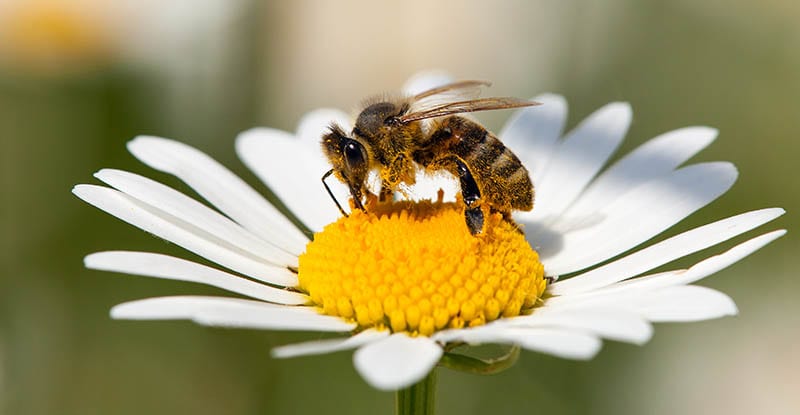
Although many people fear insects and think immediately of pests like mosquitoes, flies, and others that bite, sting, or cause damage, several insects greatly benefit humans. For that reason, all of the states in the United States have adopted an insect as their “state insect.” If you live in Georgia and wonder what the state insect is in the Peach State, wonder no longer! It’s the European honeybee, one of the most beneficial insects on Earth! The European honeybee is critical to the crops in Georgia as a pollinator. Without it, many crops would wither and die.
How was the European honeybee decided on as Georgia’s state insect? For the answer, you need to go back to 1975. That’s when the Georgia state legislature chose this important pollinator as the state’s insect during a special legislative session.
Now that you know Georgia’s state insect and how the state chose it, you might have other questions about the European honeybee. You might be wondering about the state insects of other states, also. If you are, read on! We have the answer to those questions and more below. It’s a fascinating look at how the honeybee helps humanity and makes our world a better place to live!
Why Is the Honeybee so Important to Georgia?
The main reason honeybees are so crucial to Georgia is the same reason they’re essential worldwide. Georgia’s agricultural industry contributes nearly $70 billion annually to the state’s economy. More than that, approximately one out of every seven people living in Georgia works in agriculture or a related field. There are nearly 42,500 farms in the state, averaging 235 acres each. These farms cover almost 9,600,000 acres in a state blessed by a climate that allows for growing virtually any crop.
Without honeybees to fly around and pollinate plants, there would be no crops to harvest and sell. Those crops include some of the most important in the country, like pecans, onions, blueberries, and peanuts. It also contains crops like cotton, watermelon, bell peppers, sweet corn, cucumbers, cabbage, and tomatoes. Together they added nearly $9.6 billion to Georgia’s economy in 2020. What’s truly amazing is that despite all of the changes to human society in the last 300 years, farming is still the foundation of Georgia’s economy. What’s even more amazing is that it all rides on the back of the humble honeybee.
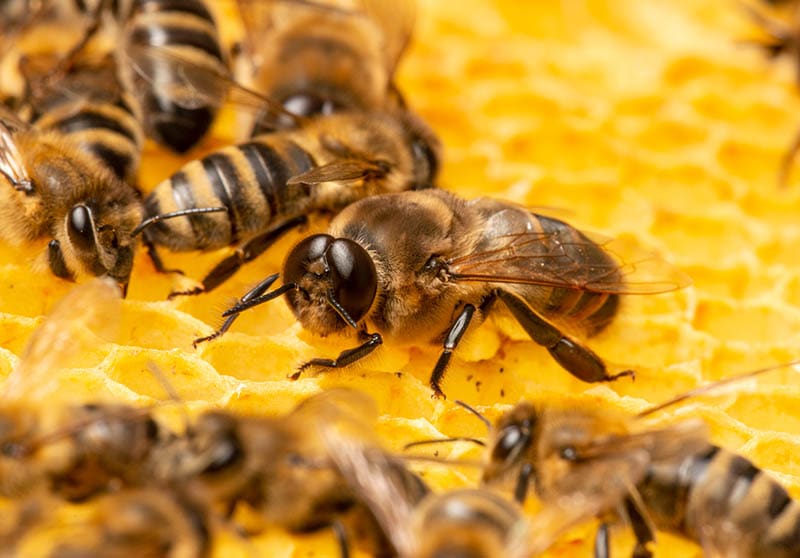
Which States Have Adopted the Honeybee as Their State Insect?
Georgia isn’t the only state that has recognized the honeybee for its importance to agriculture, the economy, and human survival. 16 other states have also named the honeybee as their state insect, including Arkansas, Kansas, Louisiana, Maine, Mississippi, Missouri, Nebraska, New Jersey, North Carolina, Oklahoma, South Dakota, Tennessee, Utah, Vermont, West Virginia, and Wisconsin.
What’s a little surprising is that in Virginia, where settlers first introduced the European honeybee to the United States in 1622, their state insect is the Tiger Swallowtail butterfly. Early colonists brought the honeybee from Europe to help pollinate their crops.
What Do Honeybees Do, Exactly?
While it’s true that honeybees pollinate plants, they don’t set out to do this specific task. When honeybees fly around from flower to flower and plant to plant, they collect pollen and nectar for food. Worker bees store the nectar in their stomachs and pass it from one worker bee to the next until all the water in the nectar evaporates. Without water, the nectar becomes honey which is then stored in the honeycombs of a beehive.
As honeybees fly around and collect pollen from flowers, some of the pollen from the stamen of the flowers sticks to the hairs on the honeybees’ bodies. Then the bees fly to another flower, where some of the pollen stuck to their hairs rubs onto the female reproductive organ of another flower (the stigma or pistil), and pollination is the result. In other words, pollination is just a happy accident when bees collect food for themselves and their hive.
Honeybees are typically the most active between 1 pm and 4 pm. During a single flight to forage for nectar, a honeybee will typically visit 100 flowers, at which point they return to the hive to deposit their nectar and other collected foodstuff. The average honeybee will make between 10 and 15 foraging trips a day, meaning they will visit between 1,000 and 1,500 flowers a day, and sometimes more. Researchers speculate that a particularly industrious honeybee can visit up to 5,000 flowers in a single day, which is remarkable.
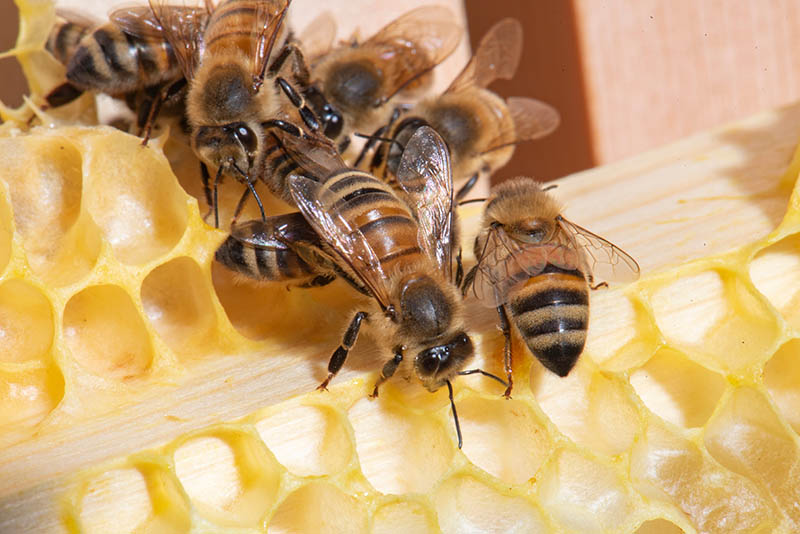
How Far Do Honeybees Travel to Find Nectar and Pollen?
Amazingly, honeybees will fly up to 3 miles, and sometimes more, to find and collect nectar and pollen for their hives. Researchers have tracked honeybees flying up to 6 miles from their hive. To collect a single pound of honey, a hive of honeybees will fly nearly 40,000 miles, equal to the Earth’s circumference!
Do Bee Stingers have Venom?
A bee stinger does contain venom, which is why you have pain and swelling where they sting you. However, it would take hundreds of bee stings to kill you unless you have an allergy. In fact, it would take about eight bee stings for every pound you weigh to be lethal. For example, if you weighed 150 pounds, you would need to be stung 1200 times before it would be fatal! That’s one reason fatalities from bee stings are so rare.
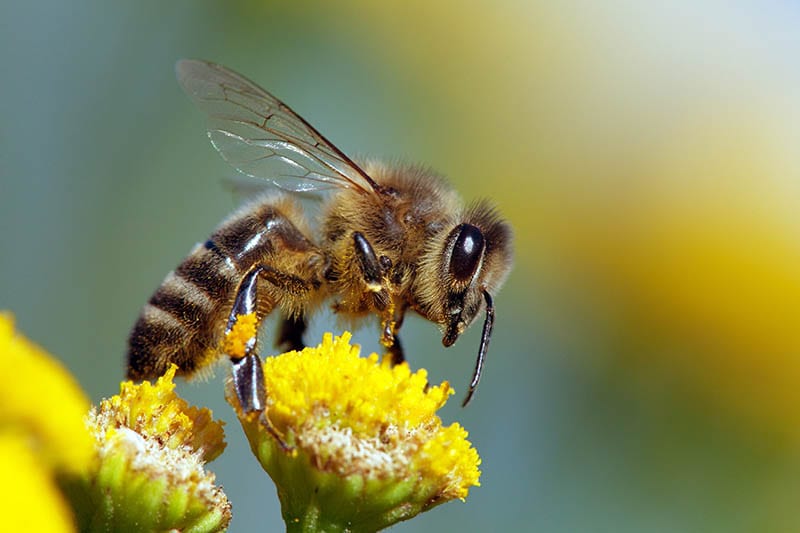
What To Do if You’re Stung by a Honeybee
If you’re stung by a honeybee, the first thing to do is remain calm, which is slightly difficult because bee stings can be quite painful. The next thing you need to do is remove the stinger. Bee experts recommend removing it by scraping over the stinger with your fingernail in the direction that forces it back out of the injection site. Also, it’s important to remember that you shouldn’t use tweezers to remove a bee sting. If you use tweezers and squeeze the stinger, more of the venom inside it can be forced into your skin and cause more pain.
Once the stinger has been removed, wash the area with soap and water. If the sting site is swelling and painful, consider applying a cold pack to it for 5 to 10 minutes. In most cases, the swelling and pain will reduce significantly after a few minutes and eventually completely disappear. However, if you’re having a severe reaction with swelling, a trip to your local emergency room might be necessary, as you might have an allergy to bee stings.
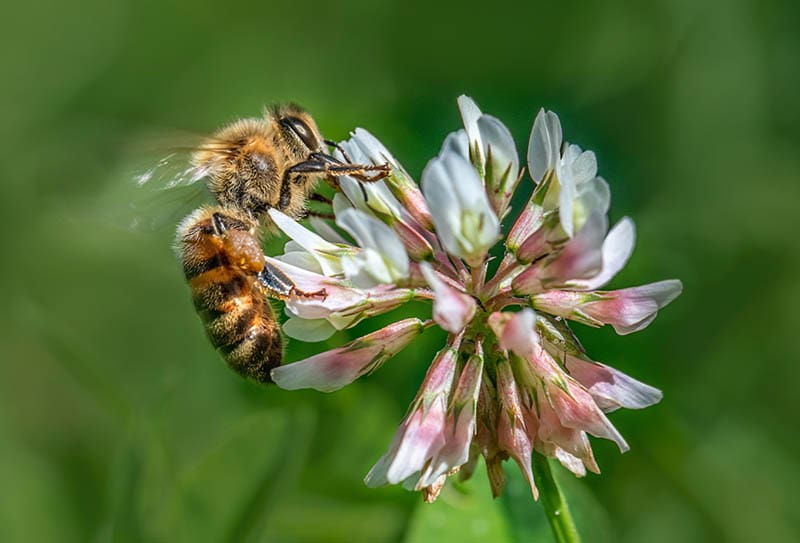
Fascinating Facts About Honeybees
- The worker bees who collect pollen and nectar are all females.
- Worker bees are the bees that have stingers, while drone bees, who stay in the hive and tend to the queen bee, do not.
- The queen bee does have a stinger, but she never leaves the hive and thus never has the need to use it.
- On average, a worker bee will produce about 1/12 of a teaspoon of honey during her lifetime (about 6 weeks).
- The only job male bees have in their hive is to mate with the queen. After they have mated with her, they die.
- Honeybees can fly up to 15 miles an hour.
- In winter, honeybees eat the honey they have stored in their colony.
- It takes approximately 11,000 hours for bees to make about 3 pounds of honey.
- About one in three mouthfuls of food you eat daily is made possible by honeybees and their pollination prowess.
- Almonds, blueberries, and cherries depend almost 100% on honeybees for pollination. Kiwi, cocoa beans, melons, and brazil nuts also depend highly on honeybees.
- A honeybee has 170 odor receptors they use to recognize flowers. They also use their incredible sense of smell to communicate.
- If a queen bee dies, worker bees will select a bee larva (aka a baby bee) and feed it “royal jelly.” This is a special, incredibly dense, and nutrient-packed food they make especially for this reason. That larva will then change from a worker bee into a new queen.
 Final Thoughts
Final Thoughts
It wasn’t difficult for the Georgia legislature to choose their state insect since the European honeybee is essential to Georgia’s agricultural industry and economy. Without honeybees, Georgia’s agrarian industry would collapse, and millions of people worldwide would die from starvation.
Unfortunately, honeybees are under siege from pesticides, habitat destruction, drought, parasites, air pollution, global warming, and other threats. Thankfully, there’s a concerted effort to help the honeybees and increase their populations in Georgia. While some insects are real pests, the European honeybee is a friend to humankind and an integral part of life on Earth. If you live in the Peach State, take a moment every so often to thank the humble honeybee for everything they do.
- https://statesymbolsusa.org/symbol-official-item/georgia/state-insect/honeybee
- https://www.environment.sa.gov.au/goodliving/posts/2016/10/bees
- https://www.gfb.org/education-and-outreach/about-ga-agriculture.cms
- https://www.orkin.com/pests/stinging-pests/bees/honey-bees/what-do-honey-bees-collect
- https://www.trubeehoney.com/pages/honeybee-facts
- https://www.natgeokids.com/uk/discover/animals/insects/honey-bees/
- https://www.mdbka.com/bee-information/
- https://ourworldindata.org/pollinator-dependence
- https://www.thehealthy.com/nutrition/vitamins/royal-jelly/
- https://statesymbolsusa.org/symbol-official-item/georgia/state-insect/honeybee
Featured Image Credit: Daniel Prudek, Shutterstock
Contents
